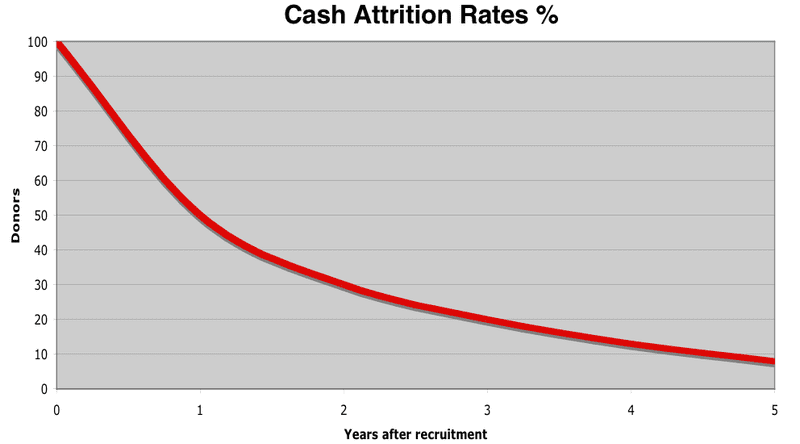What really satisfies a donor?
Adrian Sargeant found back in 2000 that about half of all cash donors give just once to a charity. Even those people who do give again, fall off the donor file at the alarming rate of 30% a year.
The figures look even worse in the US, where an initial attrition rate of 70% is considered acceptable by many organisations.
As Adrian points out, "Donor satisfaction with the quality of service provided by the fundraising team is the single biggest driver of loyalty."
The Rockefeller Corporation has studied why customers defect in the commercial sector and found striking similarities with the results of a study that Bluefrog undertook into donor lapsing back in 2007.
They found:
1% The customer dies.
3% The customer moves away.
5% The customer has a friend (who provides similar services).
9% The customer is lost to a competitor.
14% The customer is dissatisfied with (some aspect of) the service.
68% The customer believes you do not care about him or her.
Price and quality are conspicuous by their absence. Most defections are the result of failings in customer care and the subsequent perceptions of indifference.
It is the same for charities. It is how someone is treated – not what a charity actually does – that makes the difference.
Bluefrog research summed up what sort of treatment donors were looking for very simply…
Perhaps it's even the name that we give to the people we depend on that causes us to ignore their needs.
A donor, by definition, gives something away. Their money is seen as a gift or a contribution rather than a transaction. But, as we all know, donors do want something – and it isn't just information on what your charity is doing or believes that they are after.
Michael LeBoeuf neatly summed up what people are looking for when they spend their money in his book, How to Win Customers and Keep Them for Life.
"Despite all the untold millions of products and services for sale in today's marketplace, customers will exchange their hard-earned money for only two things:
- Good feelings
- Solutions to problems"
In putting together a recruitment and retention strategy, giving people good feelings is a great place to start.
Tags In
The Essentials

Crack the Code to Regular Giving: Insights, Strategies, and a Special Giveaway!

‘Tis Halloween. Keep to the light and beware the Four Fundraisers of the Apocalypse!

Why do people give? The Donor Participation Project with Louis Diez.

A guide to fundraising on the back of a postcard

What does the latest research tell us about the state of fundraising?






